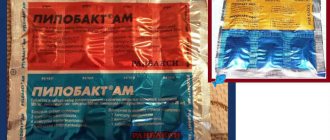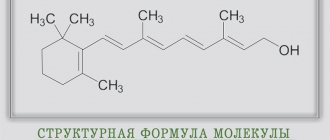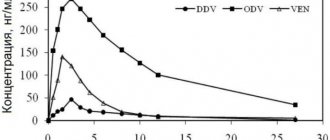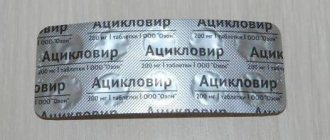Indications for use of the drug MICRAZIM®
Replacement therapy for exocrine pancreatic insufficiency:
- chronic pancreatitis;
- cystic fibrosis;
- pancreatic tumors;
- surgical interventions on the pancreas.
Symptomatic therapy in complex treatment for the correction of digestive disorders that occur with other diseases or pathological conditions of the gastrointestinal tract:
- condition after resection of the stomach, gall bladder, part of the intestine;
- diseases or conditions accompanied by a violation of the process of biliary excretion (liver diseases, cholecystitis, gallstones, chronic diseases of the biliary tract, compression of the biliary tract by neoplasms, cystic growths);
- intestinal diseases accompanied by impaired movement of intestinal contents.
To improve food digestion in adults and children with normal gastrointestinal function with:
- errors in diet (eating fatty foods or large amounts of food, irregular meals);
- disorders of chewing function, with a sedentary lifestyle, prolonged immobilization.
Preparation for X-ray and ultrasound examination of the abdominal organs.
Directions for use and dosage
Capsules are taken orally with a small amount of water or fruit juice (with the exception of alkaline liquid). When prescribing a single dose of 2 or more capsules, it is recommended to take ½ of the total amount of the drug before meals, and the other half directly during meals. A dose of 1 capsule is taken with meals.
To facilitate swallowing, children or elderly patients can take the drug without the capsule shell by dissolving its contents in liquid or liquid food (pH below 5.0) that does not require chewing (yogurt, applesauce). Chewing, crushing pellets or mixing with food (pH above 5.5) destroys their shell, which protects them from the effects of gastric juice. It is necessary to prepare a mixture of pellets with liquid or food before direct consumption.
It is recommended to individually select the dose of Micrazym, taking into account the composition of the diet, the severity of the symptoms of the disease and the age of the patient.
Taking the drug can last from several days for indigestion to several months and years for long-term replacement therapy.
The maximum permissible daily dose for children: up to one and a half years old - 50,000 units, at the age of one and a half years and older - 100,000 units.
Recommended dosage for replacement therapy of various types of exocrine pancreatic insufficiency:
- Steatorrhea, with a fat content in feces of more than 15 g per day: 25,000 IU of lipase with each meal for patients with diarrhea, weight loss and lack of effect from diet therapy. If the drug is well tolerated, to achieve a clinical effect, an increase in the single dose to 30,000-35,000 IU of lipase is indicated. If there is no improvement in treatment results, it is necessary to clarify the diagnosis or reduce fat intake and consider prescribing simultaneous use of proton pump inhibitors. In the absence of diarrhea and weight loss against the background of mild steatorrhea, Micrazim is prescribed in a single dose of 10,000-25,000 IU of lipase;
- Cystic fibrosis: initial single dose for children under 4 years of age - at the rate of 1000 IU of lipase per 1 kg of child weight and 500 IU of lipase per 1 kg - at the age of 4 years or more. The dose should be adjusted based on nutritional status and severity of steatorrhea. It is not recommended to prescribe a maintenance dose of more than 10,000 IU of lipase per 1 kg of body weight per day.
pharmachologic effect
An enzyme preparation from the pancreas of animals, which contains protease, lipase and amylase, which ensure the digestion of proteins, fats and carbohydrates of food.
After taking the drug, the gelatin capsule dissolves in the stomach under the influence of gastric juice and pancreatin microgranules, stable in the acidic environment of the stomach, together with gastric contents enter the duodenum, and then into the small intestine, where digestive enzymes are released and enzymatic digestion of food is ensured. Pancreatin in the form of microgranules ensures faster mixing of digestive enzymes with intestinal contents and their uniform distribution, which leads to higher digestive activity.
The enzymatic activity of pancreatin appears maximum 30-40 minutes after oral administration.
Dosage regimen
Doses of the drug are selected individually depending on the severity of the disease and diet. If a single dose of the drug is more than 1 capsule, you should take half of the total number of capsules immediately before meals, and the other half during meals with a non-alkaline liquid (water, fruit juices). If the single dose is 1 capsule, it should be taken with meals.
If swallowing is difficult and for children, the capsule can be opened and the microgranules can be added to foods that do not require chewing (for example, applesauce, yogurt). Crushing or chewing microgranules, as well as adding them to food with a pH above 5.5, leads to the destruction of the shell that protects them from the action of gastric juice. The prepared mixture must be used immediately.
It is recommended to drink enough fluids during enzyme therapy; a lack of fluid can cause constipation.
For cystic fibrosis
the initial calculated dose for
children from 1 to 4 years
is 1000 IU lipase/kg body weight at each feeding, for
children over 4 years old
- 500 IU lipase/kg body weight at each meal. The dose should be selected individually, depending on the severity of the disease, the severity of steatorrhea and nutritional status. The maintenance dose for most patients should not exceed 10,000 IU lipase/kg body weight/day.
For other types of exocrine pancreatic insufficiency or replacement therapy
in patients with chronic pancreatitis,
the dose of enzymes depends on the degree of exocrine insufficiency, as well as the individual dietary habits of the patient.
With steatorrhea
(more than 15 g of fat in feces per day), as well as in the presence of diarrhea and weight loss, when the diet does not have a significant effect, prescribe 25,000 units of lipase with each meal.
If necessary and well tolerated, the dose is increased to 30,000-35,000 IU of lipase per dose. Further increase in dose, in most cases, does not improve treatment results and requires a revision of the diagnosis, reduction of fat in the diet and/or additional prescription of proton pump inhibitors. For mild steatorrhea
, not accompanied by diarrhea and weight loss, 10,000 to 25,000 units of lipase are prescribed per dose.
Permissible dose for children under 1.5 years of age
— 50,000 IU lipase/day;
for children over 1.5 years old,
the daily dose of the drug should not exceed 100,000 units of lipase.
Release form and composition
Dosage form - capsules: hard gelatin capsules with a transparent body of two types: size No. 2 - with a brown cap, size No. 0 - dark orange, inside the capsules - enteric pellets of spherical, cylindrical or irregular shape from brown to light brown with a specific odor (10 pcs. in a blister pack, 2 or 5 packs in a cardboard box).
The active ingredient of Micrazym is pancreatin, in 1 capsule:
- Size No. 2 - 10,000 units (125 mg), which is equivalent to a nominal lipolytic activity of 168 mg or activity: amylase 7500 units, lipase 10,000 units, protease 520 units;
- Size No. 0 – 25,000 units (312 mg), which is equivalent to a nominal lipolytic activity of 420 mg or activity: amylase 19,000 units, lipase 25,000 units, protease 1300 units.
Auxiliary components: enteric pellet shell - copolymer of ethyl acrylate and methacrylic acid (1:1) (in the form of a 30% dispersion containing additional sodium lauryl sulfate and polysorbate 80), triethyl citrate, simethicone emulsion 30% (in dry form 32.6%) in the composition of which: methylcellulose, suspended colloidal silicon, sorbic acid, precipitated colloidal silicon, talc, water.
Capsule body composition: gelatin, water.
Ingredients of the capsule cap: gelatin, crimson dye (Ponceau 4R), proprietary blue dye, quinoline yellow dye, titanium dioxide, water.
special instructions
Children and adults receiving pancreatin therapy in significant doses for a long time should be regularly monitored by a specialist.
The main reasons for the ineffectiveness of enzyme therapy are inactivation of enzymes in the duodenum as a result of acidification of its contents, concomitant diseases of the small intestine (helminthic infestations, dysbiosis), duodenostasis, patients’ failure to comply with the recommended treatment regimen, and the use of enzymes that have lost their activity.
Replacement therapy for pancreatic enzyme deficiency cannot replace the treatment of the underlying disease.
Micrasim®
Micrazim® can be prescribed to patients of any age, including infants and the elderly, due to the possibility of individual dose selection by combining drugs with different dosages, as well as due to the ability to use the contents of gelatin capsules (microgranles) directly for administration.
Capsules are taken orally, during or after meals, without chewing, with a sufficient amount of liquid (water, juices). If a single dose of the drug is more than 1 capsule, you should take half of the total number of capsules immediately before meals, and the other half during meals. If the single dose is 1 capsule, it should be taken with meals.
If swallowing is difficult (for example, in small children or elderly people), the capsule is opened and the drug is taken directly in microgranules, after mixing them with a slightly acidic (pH <5.0) liquid or food with a liquid consistency that does not require chewing (pH <5.0 ). Any mixture of microbeads with food or liquid should be taken immediately after preparation.
When treating with Micrazym®, to prevent increased constipation, it is important to ensure a normal level of water intake, especially with increased fluid loss.
The dose of the drug is selected individually depending on age and severity of symptoms. To achieve an adequate individual dose, in addition to Mikrazim® 40000 IU capsules, it is possible to use the Mikrazim® drug with dosages of 10,000 IU or 25,000 IU.
Cystic fibrosis.
For children over 4 years of age, the average dose is 500 IU of lipase per kilogram of body weight at each meal. For children under 4 years of age, the initial calculated dose is 1000 IU of lipase per kilogram of body weight at each feeding (it is recommended to use the drug Mikrasim® 10,000 IU or 25,000 IU)
The dose should be selected individually, depending on the severity of the disease, the severity of steatorrhea and nutritional status. The maintenance dose for most patients should not exceed 10,000 units of lipase per kilogram of body weight per day.
For other conditions accompanied by exocrine pancreatic insufficiency
, the dose is set individually, taking into account the degree of digestive insufficiency and fat content in food, individual eating habits and the patient’s age: The dose of lipase required by the patient during the main meal (breakfast, lunch or dinner) varies from 20,000 IU to 75,000 IU ,
When treated with Mikrasim®, the average initial dose of lipase is 10,000-25,000 units during the main meal (provided by using Mikrasim 10,000 units or Mikrasim 25,000 units), however, higher doses may be required to achieve a therapeutic effect. Typically, the patient should receive at least 20,000 units to 50,000 units of lipase with food
In case of severe steatorrhea (more than 15 g of fat in feces per day), in the presence of diarrhea, weight loss and lack of effect from diet therapy, treatment begins with a dosage of 25,000 IU of lipase at each meal, but if necessary and well tolerated, the dose is increased to 35,000 IU -40,000 units of lipase per dose. Further increase in dose in most cases does not improve treatment results and requires a revision of the diagnosis, reduction of fat in the diet and/or additional prescription of proton pump inhibitors.
The average dose of pancreatin for adults is 150,000 units/day; with complete blockade of the exocrine function of the pancreas - 400,000 units/day, which corresponds to the daily requirement of an adult for lipase. The maximum daily dose is 15,000 IU-20,000 IU/kg. The permissible dose for children under 1.5 years of age is 50,000 units/day; over 1.5 years - 100,000 units/day. The duration of taking pancreatin can vary from several days (digestive disorders) to several months or years (long-term replacement therapy).







